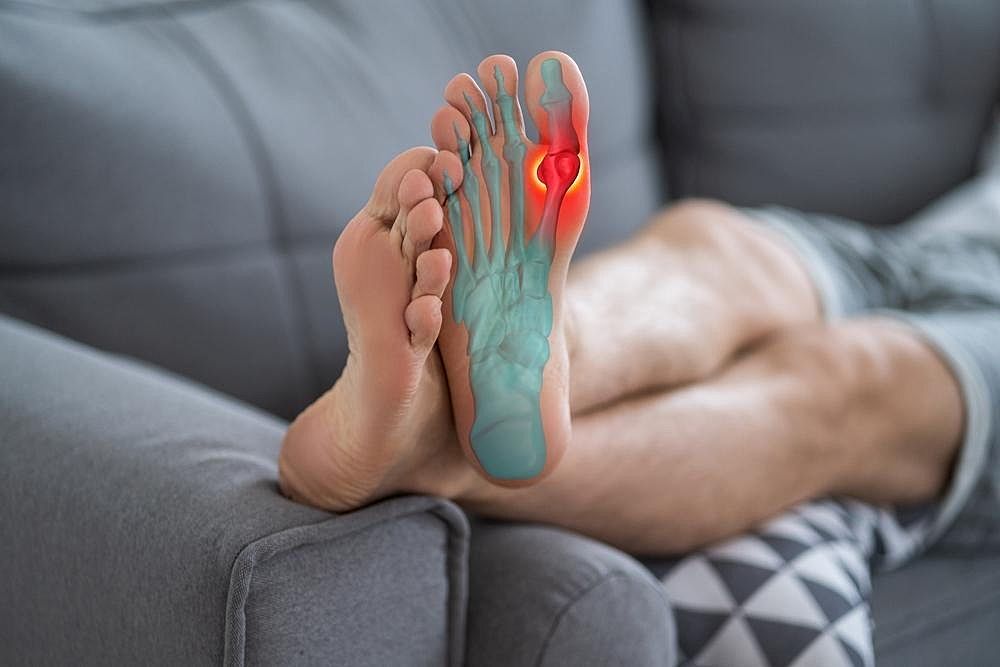




First Metatarsophalangeal (MTP) Joint Arthritis, commonly known as big toe arthritis or hallux rigidus, is a degenerative condition affecting the joint at the base of the big toe. This condition leads to pain, stiffness, and reduced mobility, significantly impacting daily activities such as walking and running. Understanding the causes, symptoms, and treatment options for first MTP joint arthritis can help individuals manage the condition effectively and improve their quality of life.
The primary cause of first MTP joint arthritis is wear and tear of the cartilage within the joint. Several factors contribute to this degeneration, including:
Age-related degeneration: As we age, cartilage naturally wears down, leading to joint inflammation and arthritis.
Previous injuries: Trauma, fractures, or repetitive stress injuries to the big toe joint can accelerate cartilage breakdown.
Abnormal foot mechanics: Conditions such as flat feet, bunions, or an unstable arch can place excessive pressure on the MTP joint.
Genetic predisposition: A family history of arthritis may increase the likelihood of developing first MTP joint arthritis.
Inflammatory conditions: Autoimmune disorders like rheumatoid arthritis can cause joint inflammation, leading to arthritis.
High-impact activities: Athletes, dancers, and individuals engaged in repetitive high-impact movements may experience early joint wear and tear.
The symptoms of first MTP joint arthritis typically develop gradually and worsen over time. Common signs include:
Pain and tenderness: Persistent pain in the big toe joint, especially during walking or bending the toe.
Stiffness and reduced range of motion: Difficulty moving the big toe, making activities like squatting, running, or wearing certain shoes uncomfortable.
Swelling and inflammation: Visible swelling around the joint due to inflammation.
Bone spurs: Over time, the body may form extra bone growths (osteophytes) around the joint, which can cause additional discomfort and restrict movement.
Altered walking pattern (gait changes): To avoid pain, individuals may change how they walk, potentially leading to secondary issues like knee, hip, or lower back pain.
For mild to moderate cases, conservative treatments can help manage pain and maintain joint function:
Footwear modifications: Supportive shoes with a stiff sole or rocker bottom design reduce pressure on the joint.
Orthotic devices: Custom orthotics or insoles provide additional support and reduce joint strain.
Activity modification: Avoiding high-impact activities and incorporating low-impact exercises such as swimming or cycling can reduce stress on the joint.
Pain management: Over-the-counter pain relievers like NSAIDs (ibuprofen, naproxen) help reduce pain and inflammation.
Functional Movement: Stretching and strengthening exercises can enhance mobility and provide relief. Recommended exercises include big toe extension stretches, toe pulls, and toe spreading to improve flexibility and joint function.
Steroid injections: Corticosteroid injections can temporarily reduce inflammation and pain in the joint.
When conservative measures fail, surgical intervention may be necessary:
Cheilectomy: Removal of bone spurs and damaged tissue to improve joint movement.
Arthrodesis (Fusion Surgery): Fusing the joint to eliminate pain and provide stability, though it limits toe movement.
Joint replacement (Arthroplasty): Replacing the damaged joint with an artificial implant, preserving mobility and reducing pain.
While not all cases of first MTP joint arthritis can be prevented, certain measures can reduce the risk or slow progression:
Wearing supportive footwear: Choosing shoes with proper arch support and cushioning.
Maintaining a healthy weight: Reducing excess stress on the joints.
Avoiding repetitive trauma: Limiting activities that put excessive strain on the big toe joint.
Stretching and strengthening exercises: Keeping the foot and toe muscles flexible and strong.
Eating an anti-inflammatory, ancestral diet: Consuming nutrient-dense, whole foods can help reduce systemic inflammation and support joint health.
First MTP joint arthritis can significantly impact daily activities, but with early intervention and proper management, individuals can maintain mobility and reduce discomfort. Consulting a specialist can help determine the best treatment approach tailored to each patient's needs. If you experience persistent big toe pain or stiffness, seeking medical advice early can prevent further joint deterioration and improve long-term outcomes.
About Dr. Edward Lang
Dr. Edward M. Lang, DPM, has been serving the New Orleans community for over thirty years, helping patients find relief from foot and ankle conditions with expert care. As a highly experienced podiatric physician, surgeon, and nutritionist, Dr. Lang takes an integrative approach to support lifelong foot health. He is the chief podiatric surgeon and owner of New Orleans Podiatry Associates.
Dr. Lang is board-certified in podiatric medicine and surgery by the American Board of Lower Extremity Surgery. He holds professional memberships with both the American Podiatric Medical Association and the Louisiana Podiatric Medical Association. Additionally, he is an elected member of the American Professional Wound Care Association. In 2014, Dr. Lang became the first and only podiatrist to receive the CityBusiness "Health Care Hero Award."
Beyond his clinical practice, Dr. Lang has contributed to public education as the former host of WBYU’s talk radio show "Footnotes," where he discussed various foot and ankle health topics.
For appointments with Dr. Lang, call or text 504-897-3627, or visit www.nolapodiatry.com.
2626 Jena Street
New Orleans, Louisiana 70115
Text: (504) 897-3627 | 7:00 AM – 9:00 PM
Call: (504) 897-3627 | 7:00 AM – 5:00 PM
Prefer email? | Fill out the form below
Step into a higher standard of foot health x personalized convenience.
From expertise to access—podiatry, reimagined.
At New Orleans Podiatry Associates, we deliver concierge-level care that extends well beyond the clinic.